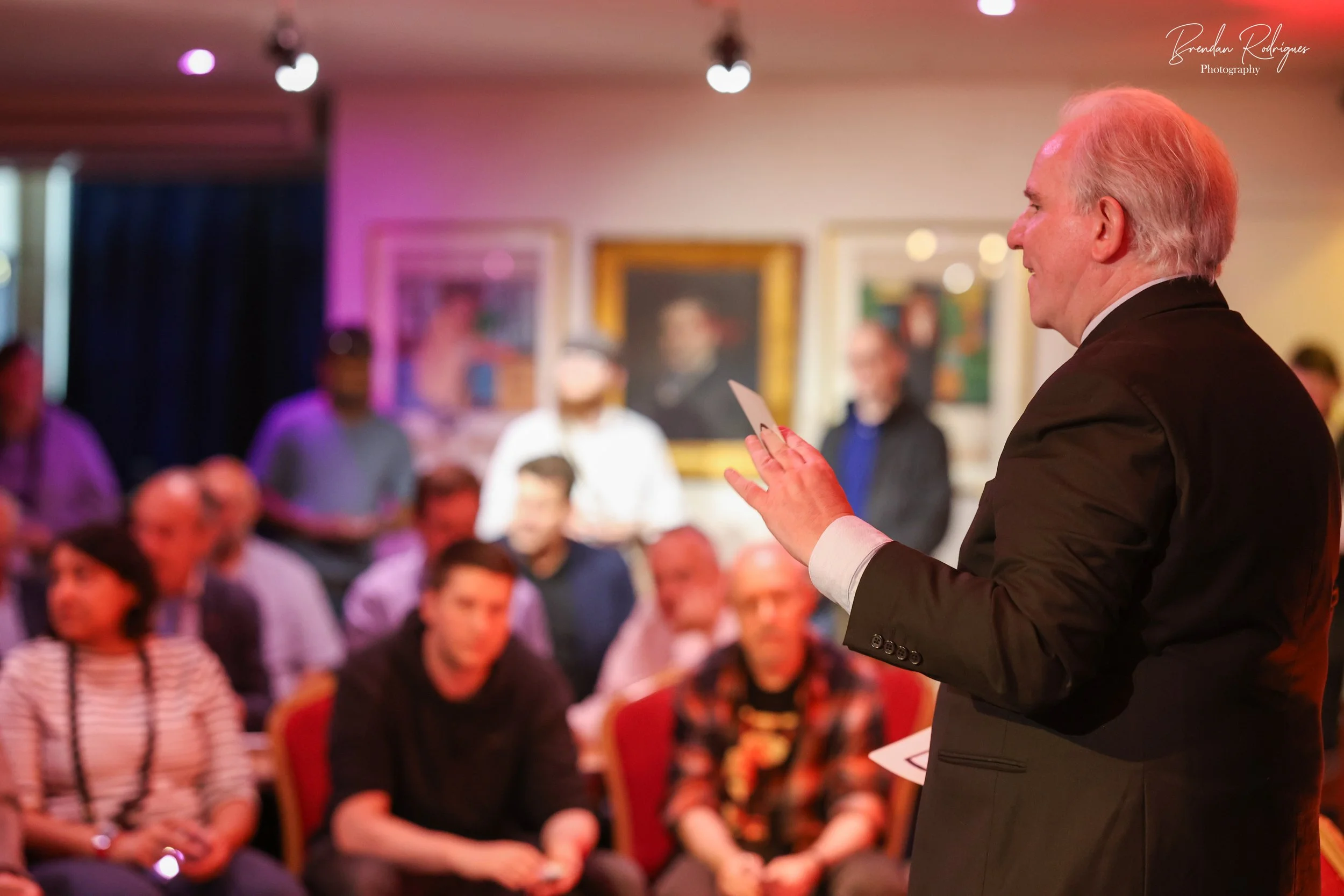The Top 3 Cold Reading Techniques Every Professional Should Master
The Top 3 Cold Reading Techniques Every Professional Should Master
If you want to connect more easily with clients, sound more insightful in meetings, or build trust faster in any conversation, then learning cold reading techniques is one of the smartest moves you can make. Used correctly, cold reading techniques offer an ethical, practical way to enhance communication, boost persuasion, and develop deeper human connection.
While many people associate cold reading with stage mentalism or psychic performers, cold reading techniques are used every day in business, coaching, sales, therapy, education and leadership. They’re not about faking anything -they’re about reading people better and responding with greater clarity and empathy.
In this post, we’ll break down three of the best cold reading techniques you can learn and start using today. Whether you're a team leader, entrepreneur, speaker or coach, mastering these cold reading techniques can elevate your communication skills dramatically.
1. The Rainbow Ruse
One of the most versatile cold reading techniques, the Rainbow Ruse involves making a statement that covers both sides of a personality trait. For example:
"You often enjoy being around people, but sometimes you feel the need to withdraw and recharge."
Why it works: Nearly everyone relates to both ends of that spectrum. This technique creates a sense of personal relevance, making your statement feel accurate and thoughtful. The Rainbow Ruse is especially useful in coaching sessions, sales consultations, or public speaking, where you want to establish rapport and credibility quickly.
How to use it: Combine two contrasting traits in a way that feels natural and insightful. Make sure the observation seems balanced rather than vague. With practice, this cold reading technique becomes a subtle and powerful way to deepen engagement.
2. The Barnum Statement
Named after P.T. Barnum, this cold reading technique relies on general statements that feel deeply personal. These are the kinds of comments that seem to speak directly to someone’s experience, even though they apply to almost everyone.
Examples:
"You have a strong desire to be liked, but you also know when to stand your ground."
"At times, you can be very critical of yourself, even when others see you as successful."
Why it works: Barnum Statements tap into universal human emotions. They feel precise, but they’re actually broad. This cold reading technique helps you come across as empathetic and emotionally intelligent. It’s especially useful in client conversations, interviews, and leadership settings.
How to use it: Practice by writing down a few core emotional themes (e.g., self-worth, uncertainty, ambition) and crafting general but affirming statements around them. Delivered with the right tone, they can instantly build trust and connection.
3. The Fishing Statement
This is one of the more interactive cold reading techniques. A fishing statement is a question or comment designed to invite a response while making it seem like you already have some insight.
Examples:
"I get the feeling you’ve recently been thinking about a big change—does that sound right?"
"There’s been someone in your life who’s been unusually supportive lately, hasn’t there?"
Why it works: It encourages the other person to share more while giving you the appearance of perceptiveness. The beauty of this cold reading technique is that it opens the door for deeper, more meaningful dialogue.
How to use it: Listen carefully, then offer a gently phrased observation that suggests an emotional undercurrent. Be vague enough to allow interpretation, but specific enough to seem credible. Then build on their response.
Why These Cold Reading Techniques Work
These cold reading techniques work because they reflect natural human needs: to be seen, heard and understood. When used ethically, they help people feel validated, which increases trust, improves rapport and creates better communication.
Cold reading techniques are not about manipulation. They’re about listening closely, observing patterns, and using language with care and emotional intelligence. That’s why they’re so powerful in fields like:
Coaching and consulting
Sales and marketing
Leadership and management
Therapy and education
Public speaking and presentation
How to Master Cold Reading Techniques
Like any skill, cold reading techniques require practice. It’s not about memorizing lines or sounding clever. It’s about developing your observation, language and empathy muscles.
If you want expert guidance, Ian Rowland offers the world’s leading training in cold reading techniques. Based in London, Ian teaches professionals across industries how to use these skills to improve influence, connection and communication.
He’s trained everyone from Google and Coca-Cola to private clients, corporate teams and even the FBI. His workshops and one-to-one coaching are fast-paced, hands-on and packed with practical value.
Next Steps
To explore cold reading techniques in more depth or book a training session, visit www.ianrowland.com.
Whether you're leading a team, building your personal brand or simply want to communicate with more impact, cold reading techniques can help you achieve more -with less effort and greater empathy.
Learn them. Use them. Master them.
Cold reading techniques are the secret advantage everyone should have.





